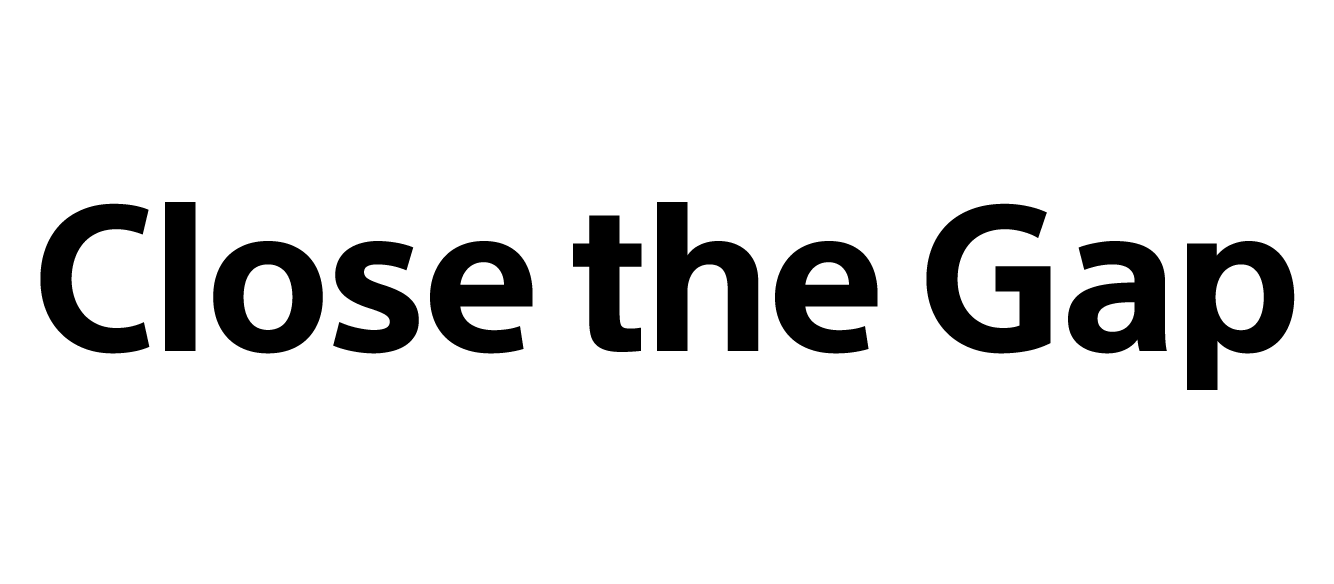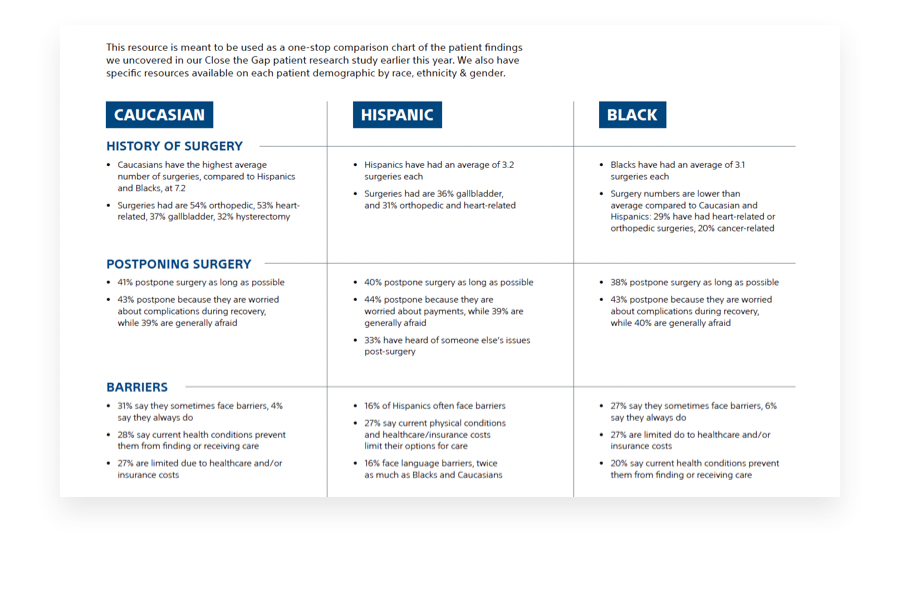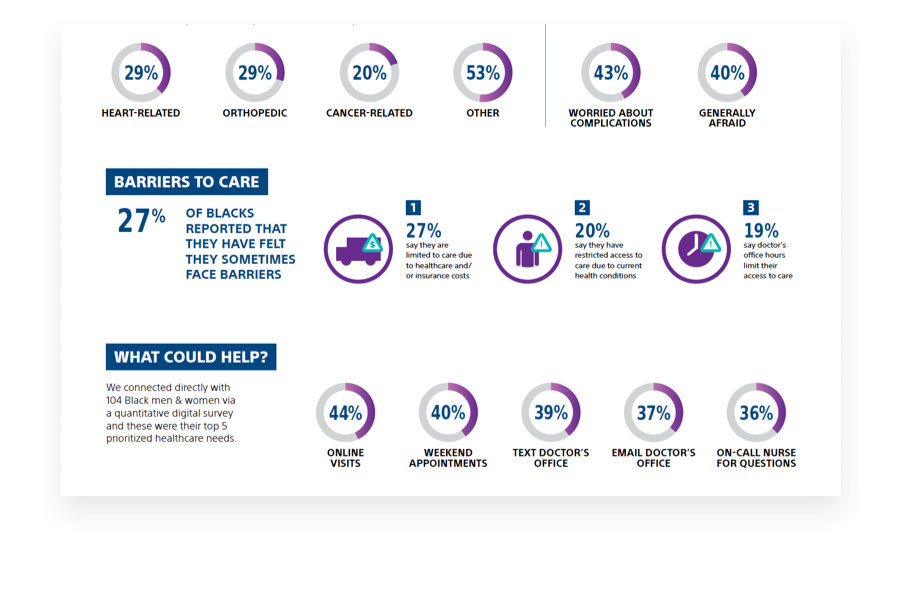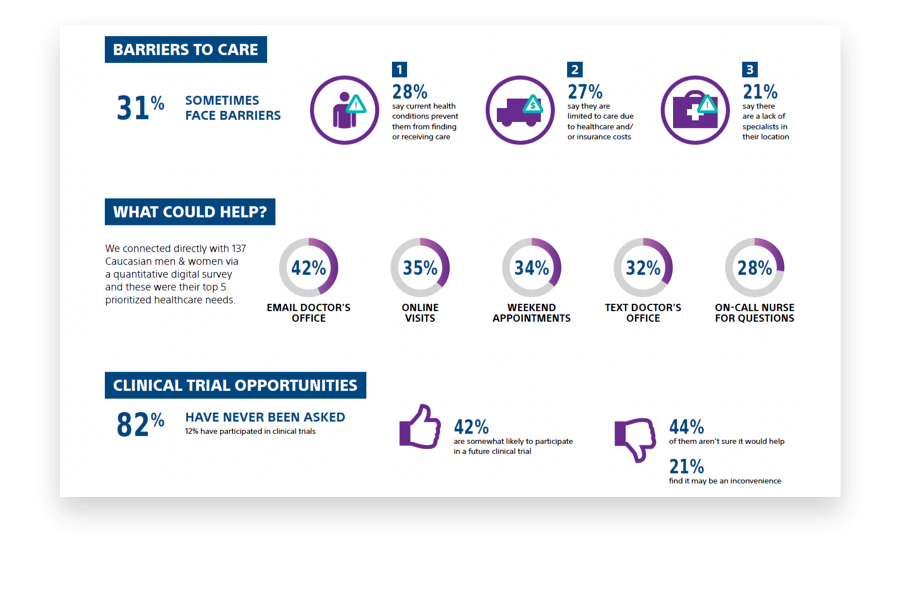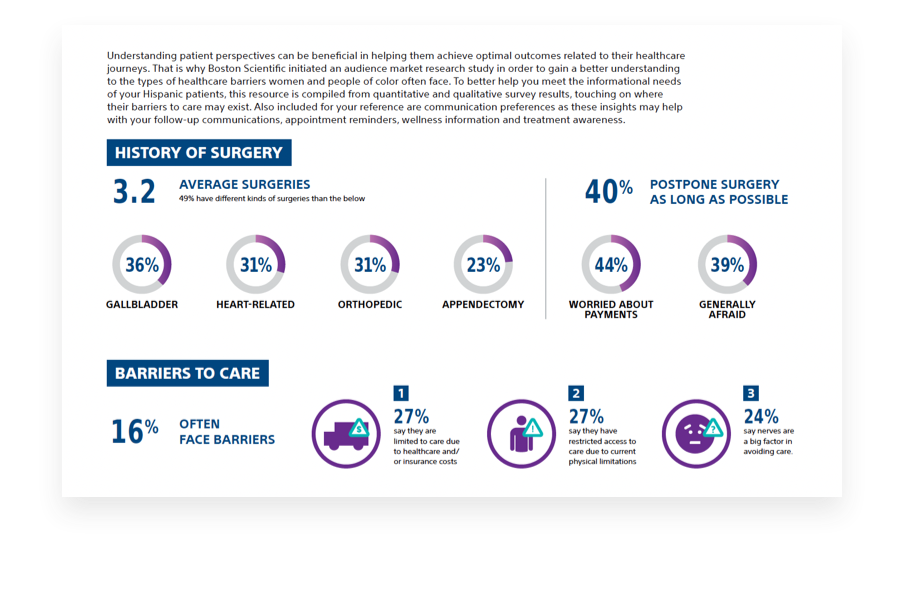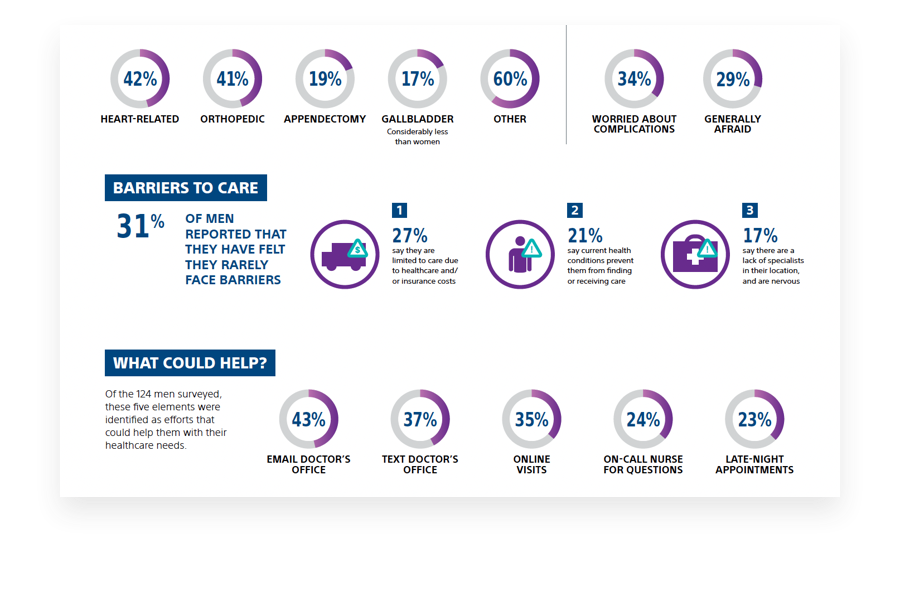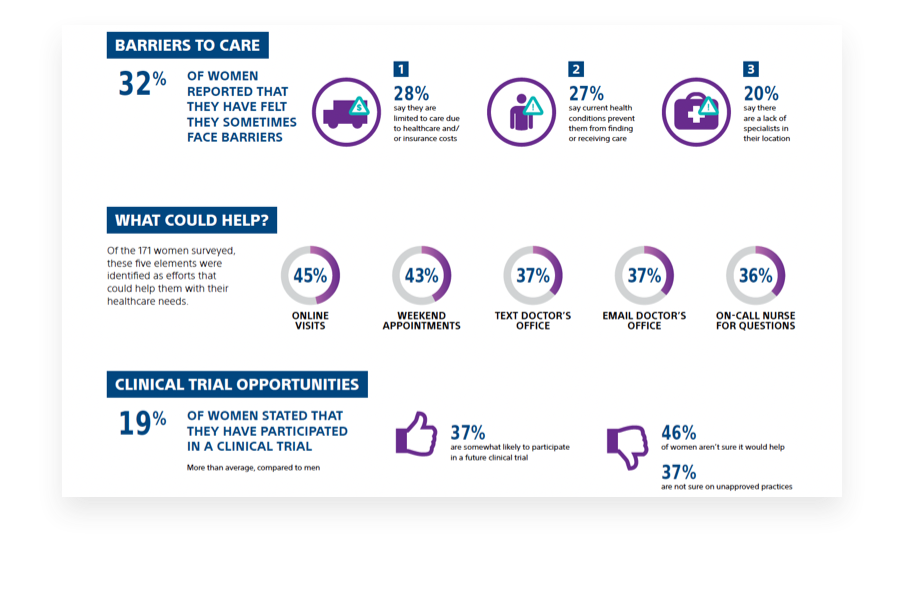
Provider resources
Explore summaries of audience insights and market research that we conducted with diverse patients and providers related to barriers to care and treatment decisions for specific diseases
What’s preventing patients from accessing specialty care?
We conducted disease-specific quantitative and qualitative research that captured perceived barriers in accessing care and preferred communication methods. The data is summarized on one-page resources for use by specialists and their referrers to provide insight into the barriers their patients may experience across demographics, specifically women and Black, Hispanic, and Latinx patients.
![]()
“I want to understand how recommended lifestyle changes affect my heart … and know what test results mean.”
- Tamika, 54, a patient with coronary artery disease
Race and ethnicity
Gender
Heart and vascular disease insights
At-a-glance insights into disease-specific risk factors and disparities can help you implement outreach plans that work for people living with and at risk of cardiovascular disease in your community.
Patient resources
Help referring physicians and primary care providers engage underserved patients in their care and improve their access to specialty care.
References:
- U.S. Department of Health and Human Services – Office of Minority Health. Heart Disease and African Americans.
- Bai, C et al. (2018). Sex differences in Atrial Fibrillation – Update on Risk Assessment, Treatment, and Long-Term Risk. Curr Treat Options Cardio Med (2018) 20: 79. DOI: 10.1007/s11936-018-0682-3.
- Staerk, L. et al. (2017). Atrial Fibrillation: Epidemiology, Pathophysiology, and Clinical Outcomes. Circ Res 2017 Apr 28: 120(9): 1501-1517. Doi: 10.1161/CIRCRESAHA.117.309732.
- American Heart Association (2019). Heart Disease and Stroke Statistics – 2019 update
- Rivero, M. Nader, N. Blochle, R. Harris, L. Dryjski, M. Dosluoglu, H. (2016). Pooper limb salvage in African American men with chronic limb ischemia is due to advanced clinical stage and higher anatomic complexity at presentation. Journal of Vascular Surgery. 63(3) pg. 1318-1324
- Shu, J. Santulli, G. (2018). Update on peripheral artery disease: epidemiology and evidence-based facts. Atherosclerosis.
